Excerpts from Jim Conrad's
Naturalist Newsletter
from the January 4, 2019 Newsletter issued from Rancho Regenesis in the woods ±4kms west of Ek Balam Ruins; elevation ~40m (~130 ft), N20.876°, W88.170°; north-central Yucatán, MÉXICO
NISSOLIA VINE FLOWERING
Below, you can see vine covering the top of a tree right next to the garden, stealing the tree's sunlight like Kudzu might in the southern US:
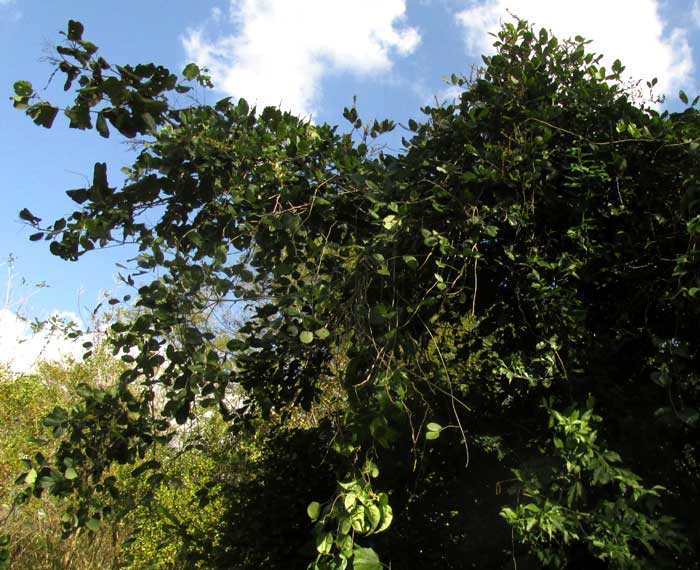
This is NISSOLIA FRUTICOSA, with no English name, so I just call it the Nissolia vine. Its flowers are small and not very noticeable. Below, you see clusters of slender racemes of flowers on a branch tip at the top of the tree:
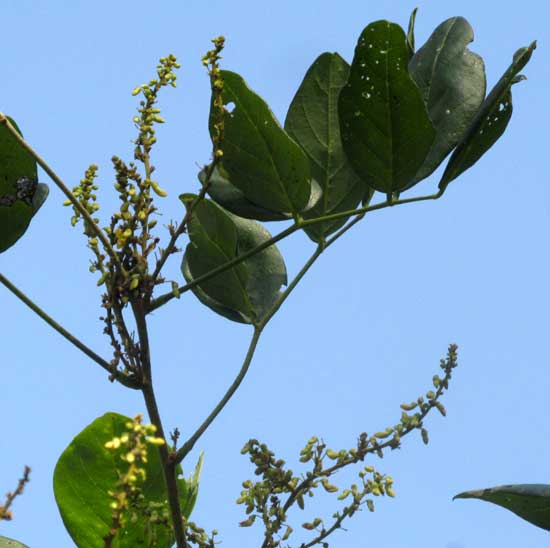
Besides their smallness, a noteworthy feature of the flowers is that they attach obliquely to slender pedicels about the same length as their corollas. Also, most blossoms don't open very widely, as shown at below:
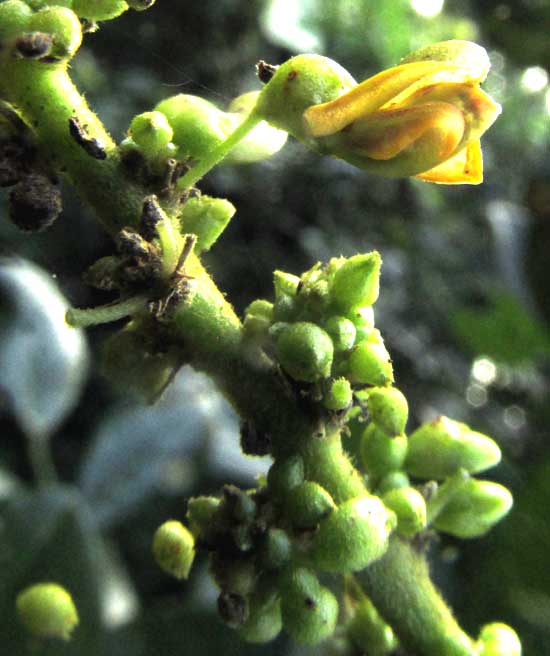
I'd assumed that such flowers were structured to accommodate smaller pollinators, but I saw numerous larger bees as well as many ants visiting the flowers. A flower close-up displaying the "papilionaceous" corolla's large top petal called the standard, two pinkish side petals called wings, and the two lower petals with their common margin fused to form a scoop-shaped "keel" is shown below:
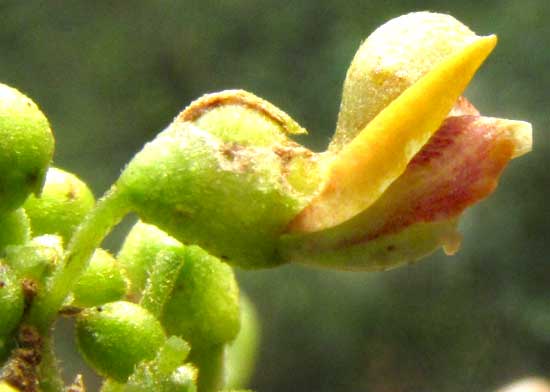
An interesting point to make is that two years ago this species was photographed in early December {see below}, but this year our vines are flowering in early January. This year our rainy season seemed a bit rainier, and the early dry season also has been rainier than usual, so maybe that accounts for it.
Nissolia fruticosa is widely distributed throughout tropical America. Its herbaceous to semi-woody stems are used by country people to tie together loads of firewood.
from the December 17, 2017 Newsletter issued from Rancho Regenesis in the woods ±4kms west of Ek Balam Ruins; elevation ~40m (~130 ft), N20.876°, W88.170°; north-central Yucatán, MÉXICO
NISSOLIA VINE FRUITING
On the main highway about 5kms north of Vallodolid, from the bicycle I spotted large clusters of fruits more or less clumped atop roadside trees. Vines often produce such clumps, where they've twined to a tree's outermost limbs to produce their flowers and fruits. Here in the early dry season, these fruits were turning brown, so they were conspicuous against the deep greenness of the forest, plus they displayed very curious, almost awkward-looking forms. Below, you can see how thickly packed they were:

A fruit close-up is seen below:
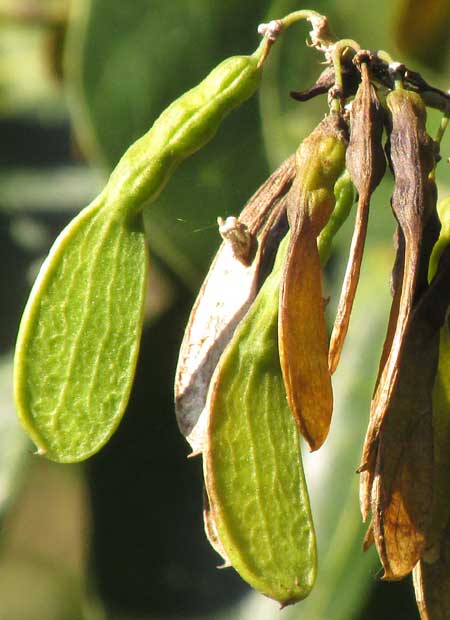
They look like green beans flattened on their lower ends, or winged ash-tree samaras. I felt pretty sure that they were legume-type fruits of the Bean Family, though, especially since the leaves were pinnately divided like many Bean Family members, as seen below:
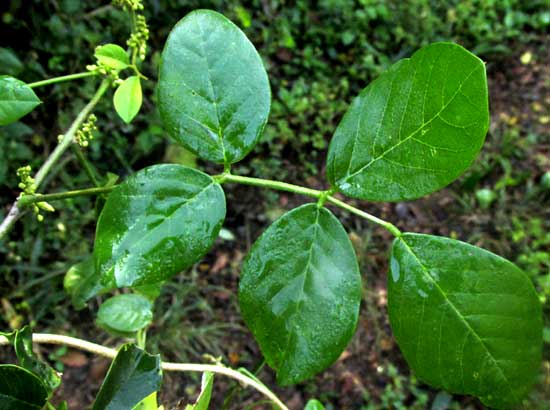
Assuming the Bean Family, it was easy to browse the list of Bean Family members documented for the Yucatan, to find that this is NISSOLIA FRUTICOSA var. FRUTICOSA, a woody vine, or liana, generally occurring in a variety of habitats in the New World tropics. The species has no commonly accepted English name.
The Maya traditionally use this woody liana to tie up loads of firewood. I find it listed as medicinal, though the use isn't given.
It's a pleasure finding a plant producing such curious looking fruits.